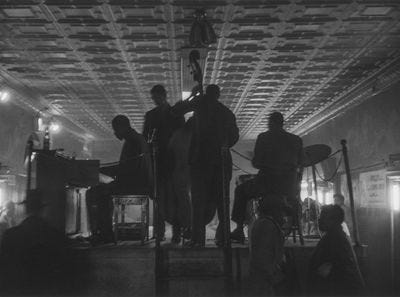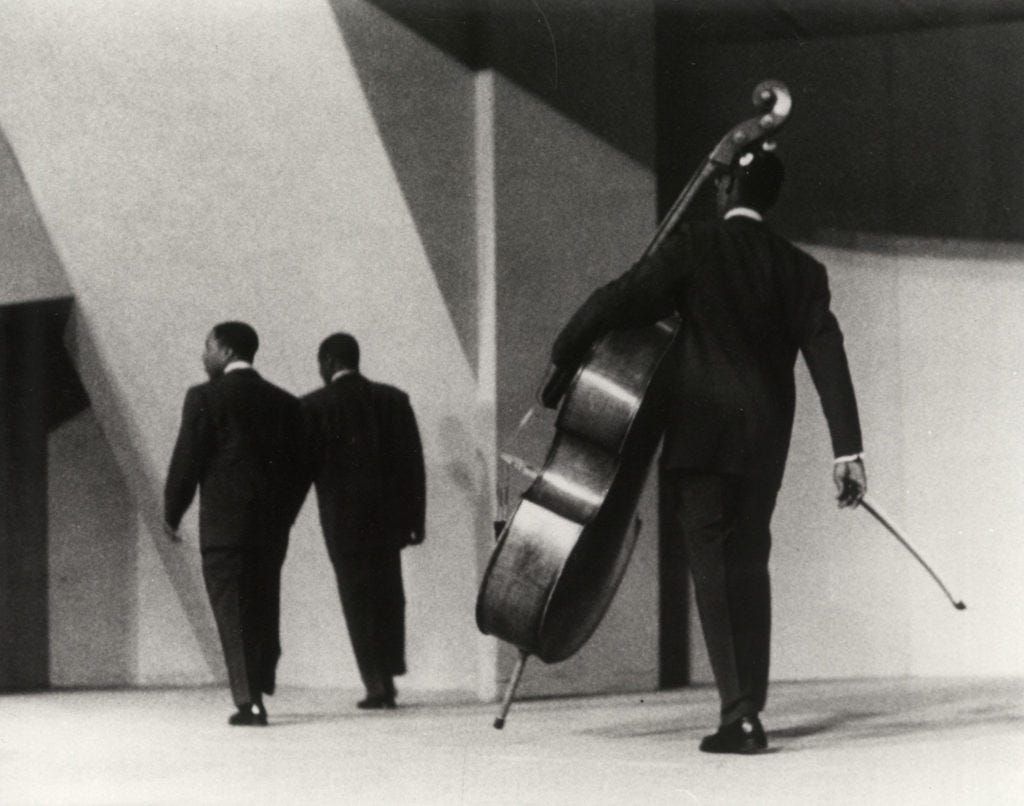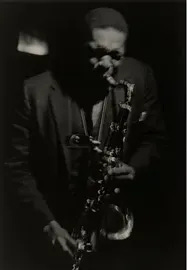Creativity, Collaboration, Flow... and all that Jazz
What Jazz can teach us about working well in teams, innovating from within and going from idea to something (and some common myths we believe in)
Is there anything better than listening to jazz - any type of it - and an autumn day, a book and a mug with a hot beverage? I don’t think there is.
Let’s bring this slow Sunday mood we all crave into this Sunday’s post.
Have you ever watched a jazz band play?
There’s something mesmerizing about it – the way each musician takes their turn for a solo, then slides back into the group without missing a beat.
It’s a chaotic kind of harmony, where different elements blend unpredictably but beautifully, creating a sense of order within spontaneity. Jazz is built on improvisation, listening, and trust. And, believe it or not, there’s a lot we can learn from jazz about innovation and collaboration.
Innovation is often thought of as a solo act – the inventor alone in their lab… or working through the night on their computer, like any entrepreneur nowadays.
But just like jazz, true innovation comes alive when we open ourselves up to work in unison with others. It’s in the balance of listening and leading, improvising within a structure, and finding that feeling of being so into what we’re doing, we lose track of the rest. So, how do you find your flow in innovation?
I was lucky enough to have a passionate music teacher in high school who wanted us to not only learn about jazz and bossa nova but actually play these genres as a class band.
In those years, I learned how CDs and vinyl’s work, including the history, rhythms, and influences behind various music genres. We also learned a lot by doing, some of us playing the drums (which requires a lot of coordination, I soon learned), and others would play piano, the guitar, and other instruments.
I had him in two classes: French and Music. His passion for music was crystal clear for anybody in class: it’s where he truly found his flow. This teacher also taught me how to really immerse yourself in something, to find that feeling. Fear not, it’s something we can learn to create in innovation, too.
The Rhythm of Listening and Responding
Myth: Jazz improv is completely made on the spot (with a bit of luck).
Think about a jazz band for a moment. Each musician has a voice, whether it’s Miles Davis on the trumpet or John Coltrane on the sax. But they aren’t just playing their music – they’re playing with each other. When Miles would take a solo, the rest of the band listened, responding subtly in rhythm, creating space for him to shine, and then effortlessly picking up where he left off.
This balance of listening and responding is the backbone of jazz – and it’s just as essential in team settings, where listening is about more than just hearing what others are saying; it’s about truly understanding their perspective.
When we listen, we’re not only building rapport but also gathering insights that can shape the direction of the project. Like musicians, we have to be ready to respond, adapt, and let others take the lead when it’s their time to shine.
Soloing with Confidence, Supporting with Grace
Myth: You’re either a soloist or a band player.
Every jazz musician has their moment to solo, to bring their unique voice to the forefront. Think of Louis Armstrong’s trumpet solos – bold, brassy, and unmistakably his own. But even as they step into the spotlight, these musicians know it’s only temporary. After their moment, they’ll fade back, supporting the next soloist with grace and rhythm.
In innovation, we all have our “solo” moments – the ideas we bring to the table, the projects we lead.
But just like in jazz, we have to know when to step back and support our teammates. It’s a balance of confidence and humility, of showcasing our strengths without overpowering the group. When we learn to both lead and support, we create a culture where ideas flow freely, and collaboration thrives.
Improvisation Within Structure
Myth: Jazz is unstructured.
Jazz is built on improvisation, but it’s not as simple as making things up on the spot. There’s a structure, a set of rules each musician understands and respects, even as they bend and play within it. This structure is what allows improvisation to work – it gives the musicians a common language, a shared rhythm that keeps them in sync, no matter how wild their solos get.
Have you ever heard a band of school kids learning to play the violin? That is (supposed to be, but clearly isn’t) structured, and it sounds like a mess, sometimes. Jazz improv also needs preparation and awareness of each others’ talents.
Stefon Harris has explained it nice in this video - although he makes it feel simple too.
For it to sound like jazz and not blues or another music genre, there’s different instruments being used, as well as other sets of rhythm, accords and scales that they learn and play.
In innovation, we need this balance of freedom and structure. Rules, processes, and frameworks (you can learn these, but knowing how and in how far to apply them is also a skill - innovation is not a one size fits all) are the “keys and notes” for any successful team. They give us clarity, set expectations, and ensure everyone is moving in the same direction. But within this structure, there has to be room for creativity – for those moments when someone goes off-script, takes a risk, and discovers something new. The answer is in the balance of structured and unstructured activities.
Syncing as a Team – The Importance of Trust
Jazz musicians can only perform at their best because they know they will have each other’s back. They trust that, no matter where the solo goes, the band will be there, keeping the rhythm steady. This allows them to take risks, to try something unexpected, knowing their team has their back.
In a team setting, that confidence in each other is crucial: and just like a jazz band is a team, so is your team at work.
If we’re not afraid to share bold ideas, to challenge the status quo, or to take the lead, we know that if we stumble, someone will be there to “pick up the beat”. Building this trust takes time and shared experiences, but once it’s there, it becomes the foundation of every great collaboration.
Finding Flow – something even Disney made into a movie, with “Soul”
If you’ve seen Pixar’s Soul, you know Joe Gardner, the jazz-loving protagonist who finds his flow in playing the piano. For Joe, music isn’t just notes on a page – it’s a feeling, a sense of being completely in sync with himself and the world around him. This flow is the same feeling we’re all searching for – we just might find it in different areas: a runner while running, a chef while cooking, an artist while drawing. It’s that sense of losing track of time and surroundings.
Finding flow in innovation isn’t about having all the answers or sticking rigidly to a plan. It’s about bringing your voice to the table, listening to others, and letting the project evolve. It’s knowing when to take the lead, when to support, and when to embrace the unexpected.
The next time you’re working with a team, think of Miles Davis, Louis Armstrong, and the other jazz greats.
So when you think of innovating, think of a dance of collaboration, creativity, a bit of (prepared) chaos or improvisation, and all that jazz (ideas)!
I’ll see you on Wednesday for a post filled with actionable tips on this jazz take.
If you liked this post, feel free to reply to this e-mail or leave a comment! I’d love to read your thoughts on jazz, collaboration, or just what this post gave you ideas for!
Last but not least - What inspired this post:
The place: Jazz Cafe Alto - in central Amsterdam. One of my current go-to Jazz places.
The visions: All photos in this post were from Roy DeCarava - one of my favorite photographers. His philosophy on taking pictures, his vision and his B&W talent have been inspired me on picture taking for the past 10 years. He was once (re-)introduced to me by a New Yorker friend who knew his daughter.
The movie: Soul, the Disney Pixar movie
The book: Flow, by Mihály Csíkszentmihályi
The teacher: Herr Fassbender - I was glad to reconnect with him recently and happy to learn that 15 Years later, he’s still teaching French and Music, now back in Germany - and that he’s now playing occasional concerts with his band :)
And consider subscribing if you haven’t already!






